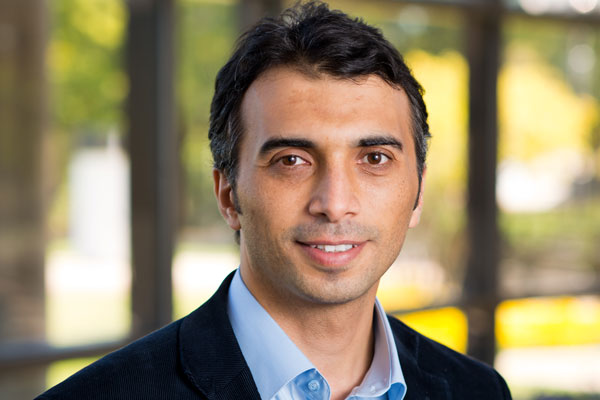Computer Science professor discusses new bioinformatics course at UM-Flint

UM-Flint Assistant Professor of Computer Science Halil Bisgin developed a new course, Bioinformatics, which was offered for the first time this spring. It is designed for both biology and computer science students. In this Q&A with University Communications & Marketing, Bisgin discusses the study of bioinformatics, research opportunities for students, and the benefits of an interdisciplinary course.
Define bioinformatics and describe what this course entails.
Bioinformatics is an interdisciplinary science, which requires biology, computer science, and statistics knowledge to analyze and interpret biological data. Acquisition, storage, organization, and visualization of such data, as well as the development of computational tools, are also considered in the field of Bioinformatics.
What students is this class designed for?
This class is designed for both Computer Science and Biology students and offered in a co-habitated fashion, meaning both graduate students and undergraduate students who need an upper-level elective course can take the course.
How can the knowledge gained in this class be used by students in their chosen professions?
We live in the "data age" where the "big data" is pouring in. Big pharma, biotech, and software companies are highly interested in hiring professionals who have skill sets related to bioinformatics. Not only the big data, but also the personalized medicine, which aims to look into a patient's genome sequence and other data for diagnostic purposes, has become an area of interest since President Obama's Precision Medicine Initiative in 2015. Therefore, governmental agencies and the health industry are in need of researchers who are equipped with bioinformatics skills.
What research opportunities are associated with this class?
First of all, students are expected to deal with real world data—which are already publicly available in Biological databases—in their course projects. In other words, students have the opportunity to replicate an existing study, check the reproducibility, and see the room for improvement. Secondly, this course brought up the opportunity for graduate students who are looking for alternative thesis topics. After offering the course, I started getting inquiries from students who plan to do thesis and specialize in this field. Thirdly, I believe we successfully built a bridge between two disciplines which would also foster research collaborations between Computer Science and Biology faculty.
Talk more about the interdisciplinary nature of the course and the sorts of benefits and insights that arise from two academic disciplines coming together in this way.
Maybe the most challenging and interesting part of this course was how to design a course which would appeal to both disciplines and make them speak the same language. Since I got the Thompson Center for Learning and Teaching fellowship to develop the course, I gave long thoughts to find a common ground. Everything started with the pre-requisites, which couldn't be the same for both disciplines. Therefore, I asked Biology majors to take an introductory-level programming course and required at least junior-level standing for Computer Science majors. I designed the course in a workshop style that let students learn as they practiced the content in the labs and homework assignments. As for the Biology concepts, I explained them at a high level for Computer Science students. Finally, I believe Biology students left with an understanding of computational tools, as well as data analysis skills. Similarly, Computer Science students discovered how amazing it was to target Biological problems with their earlier computational skills. The bottom line is I hope I made everyone a Linux lover ☺
Related Posts
No related photos.
- Biology
- College of Arts, Sciences & Education
- College of Innovation & Technology
- Computer Science
- Faculty
- Q & A
- Research
UM-Flint News
The Office of Marketing & Communications can be reached at [email protected].